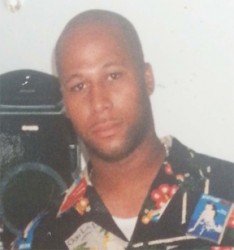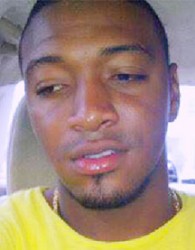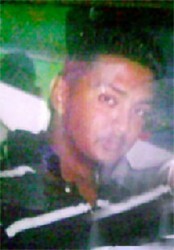Ballistics testing is done in every instance where firearms and ammunition are recovered or used in the commission of a crime and according to Crime Chief Leslie James during last year there were two instances where such tests revealed that the same weapon was used at different crime scenes.
Recently, there has been an upsurge in gun related crimes particularly armed robbery resulting is growing concerns that the same firearms are being used in the commission of these crimes.
Asked recently about ballistics testing, James said that in keeping with the Guyana Police Force’s Standard Operating Proce-dures (SOPs) as it relates to the use of a firearm, checks are done. He explained that the force has a data base where information as it relates to firearm and ammunition are entered. He said that when ballistics testing is done, the data is imputed and this sometimes results in matches.
Over the years questions have been raised about the force’s ability to conduct ballistics tests. The force has always maintained that its ballistics section has qualified staff, who have been deemed experts by the courts for the purpose of giving expert opinions on ballistics.



Among the qualifications of the staff are training in Basic Firearm Identification in Barbados, the Advanced Firearm Identification Course, the Internship Firearm Identi-fication Course and the Certificate of Instruction of Firearm Identification Course in Iowa, USA.
The force has said too that a spent shell can be used to positively identify any weapon from which it was fired and do comparisons.
The police ballistics section uses spent shells, in addition to warheads, to conduct ballistics examinations.
Several years ago the force in responding to a news article which sought to discredit its ballistics testing had said that examination of a fired cartridge case may make possible the identification of a weapon in terms of type, make, and model, noting that the presence of magazine markings, the type of breech block mark, and the size, shape, and location of ejector and extractor marks are important in making such identification.
The force said the size, shape, and location of the firing pin on fired rimfire cartridge cases can also be used to determine the make of the weapon. Identifi-cation of a weapon as having fired a particular cartridge case can be made by comparing markings on test cartridges with those on the evidence cartridge.
There have been several cases over the years where the police were able to match recovered weapons to a crime scene. Most of these cases were murders.
Asked specifically whether police through testing have been able to link the same gun to more than one crime scene, James responded in the affirmative and provided this newspaper with two instances.
The murder of Meten-Meer-Zorg, West Coast Demerara grocery owner, Zulficar Namdar was linked to an armed robbery in Wakenaam.
On September 7, an armed gang at around 8.30 pm inflicted a severe beating on a Good Success, Wakenaam woman during a robbery at her home and later shot her father in the hand as he arrived to assist after receiving her distress telephone call. Anand Danishore who owns several trawlers and is involved in the lumber trade, was the man shot in the attack.
Three days later, on September 10, witnesses had recounted that about five gunmen invaded the Meten–Meer-Zorg shop and shot Namdar through the grillwork as he stood at the counter. His friend and shop help, 17-year old Stephen Mohammed was shot to his left thigh during the attack, while his mother, Fazila Namdar, who was holding her three-year-old granddaughter, was also assaulted by the men who demanded cash and jewellery.
Ballistics analysis linked two firearms used at the robbery in Wakenaam to Namdar’s killing.
Nine persons were subsequently charged with committing the two attacks.
The second linkage that James mentioned is that of the gunning down of Denzil Mingo and Meadowbrook miner Dave Wills.
Wills was shot dead on January 31 last after a gunman jumped over the gate of the Meadowbrook home where he was staying, kicked down the front door and fired a volley of shots. Wills was in the living room picking out DVDs when the gunman opened fire. Two persons had left him mere seconds before the shooting, leading law enforcers to cast doubt on the coincidence.
Wills’ death was also reportedly linked to underworld ties. Police sources had said that there was an emerging link between the gold trade and the laundering of proceeds from the narcotics business.
Then around 4 am on November 16, Mingo, a 21-year-old resident of Third Street, Alberttown and former army second lieutenant was shot dead moments after he walked out of a Main Street nightclub.
Police had said in their press release that two men with firearms opened fire on Mingo, Joseph Barker and Earlson Murray while they were in a motor vehicle.
“… Mingo was hit several times about the body and was pronounced DOA at the GPHC, while Joseph Barker was struck about the body and has been admitted to hospital,” the police release said.
Reports are that Murray escaped with a minor injury to the back of the neck while the car was badly damaged by the gunfire.
According to an eyewitness, Mingo of Lot 39 Third Street, Alberttown, had an argument with another man earlier inside the Edge Nightclub. After Mingo and his two friends left, the eyewitness said, he heard gunfire and then saw a man jumping into a vehicle on the other side of the road.
There have been several high-profile killings this year but Stabroek News was unable to get information on the ballistics testing. James was specifically asked about the Trevor Rose case but he was unable to provide information on the results of the ballistics test. Rose, a fashion designer, was gunned down in January this year near the Eccles Access Road. Police had recovered a 9 mm pistol and matching rounds at the crime scene but the most that was said about it was that it was an illegal weapon. The spent shells recovered at the scene of the shooting did not match the weapon that was recovered. The spent shells were .45 calibre, while the rounds recovered with the weapon were 9 mm.
To date police have been unable to ascertain the true motive for Rose’s murder and who might have been responsible.
The results of ballistics tests on war heads and spent shells recovered from the scene of the murder/robbery at Sterling Products and the Montrose, East Coast Demerara are unavailable.
In the Sterling incident, which occurred on December 8, security guard Wilfred Stewart was shot dead while chemist Mario Gohill was wounded when five bandits stormed the East Bank Demerara location during a failed robbery. Persons were arrested but released and they have since been no developments in the case.
In the Montrose armed robbery which occurred last Monday, Mahendra Sukull and wanted policeman Warren Blue were shot and killed after $140,000 was snatched from the Lahago Supermarket. It is suspected that at least two accomplices managed to escape in a waiting motor car.




